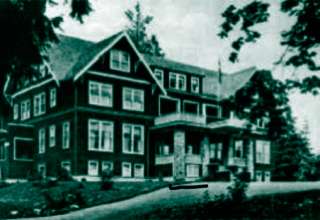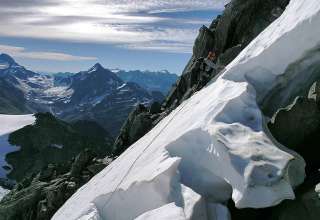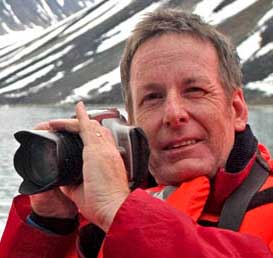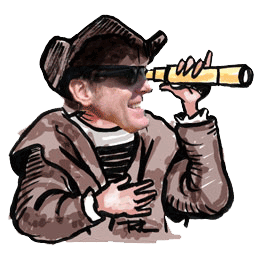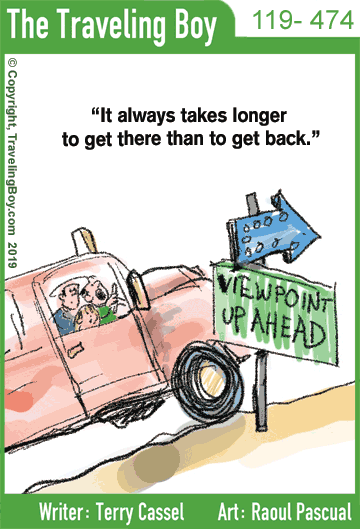I first visited Montréal over fifteen years ago, and from the second I arrived in this culturally vibrant and international city, I knew I would return often. On each visit to the city, there were always new sights and pleasures to discover, but there were also certain attractions and experiences that have become almost mandatory pilgrimages. Yes, there is much to see and do in Montréal, and these are among my favorite things to do each visit.
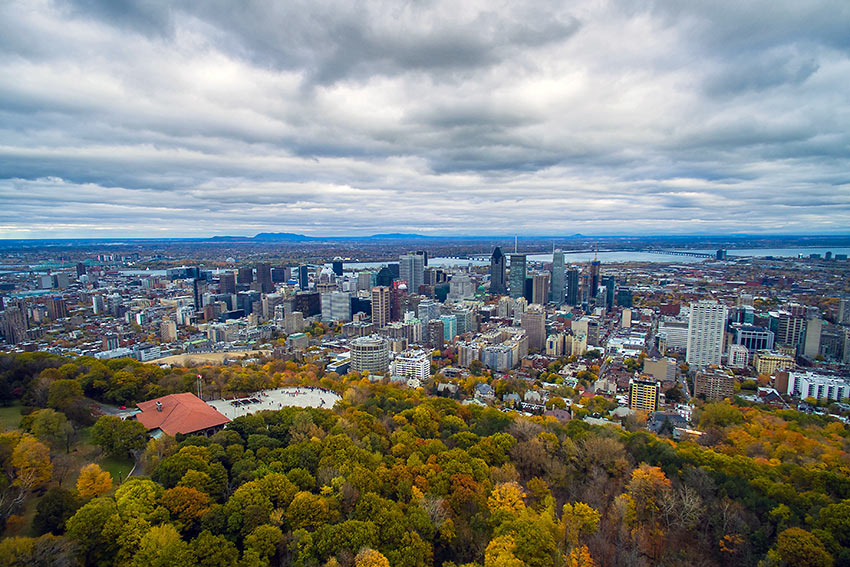
Mount Royal and Montréal
In 1535, French explorer, Jacques Cartier, climbed a small mountain, which overlooked the St. Lawrence River in Upper Canada and gave it the name, Le Mont Royal. Cartier was the first European to navigate the St. Lawrence River, and, along with his explorations of the Canada’s Atlantic coast, laid France’s claim to North America. Cartier is also credited with naming Canada, which stems from the Huron-Iroquois word kanata, meaning village or settlement. As Montréal’s small trading post grew due to its strategic setting on the river, the mountain became the symbol of the city and eventually its name. A wooden cross, now made of steel grinders and 158 spotlights, was erected. The slopes of the mountain were gradually incorporated into residential properties, but city fathers established a park on the very top for the world to enjoy. This is where my journey begins each arrival, with an easy climb to the top of the mountain for sweeping views of this bilingual city of over four million people, the fourth-largest French-speaking city the world. Who’s Number 1: Why that’s Kinshasa in the Democratic Republic of Congo, who has now edged out Paris as the world’s number one French-speaking city.
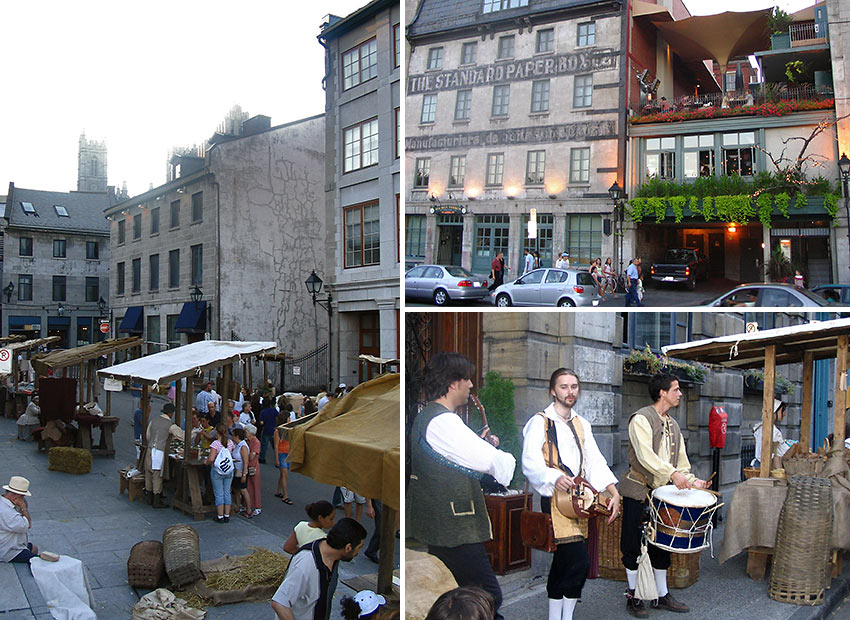
Old Montréal
Located between the St. Lawrence River and the downtown center, the cobblestone streets of Old Montréal is an essential must-see attraction. Established in 1642, the French settlement was once a fortified town and the birthplace of the city proper. Best explored on foot, this area of graceful stone buildings is worth visiting any season, but the real secret is to plan a trip the last weekend in August when the Pointe-à-Callière, the Montréal Museum of Archaeology and History, recreates an 18th-century public market. You will see locals dressed in folkloric Quebecois costumes, stalls with regional food items, demonstrations by craftspeople, musicians and, even a military camp and marching band.
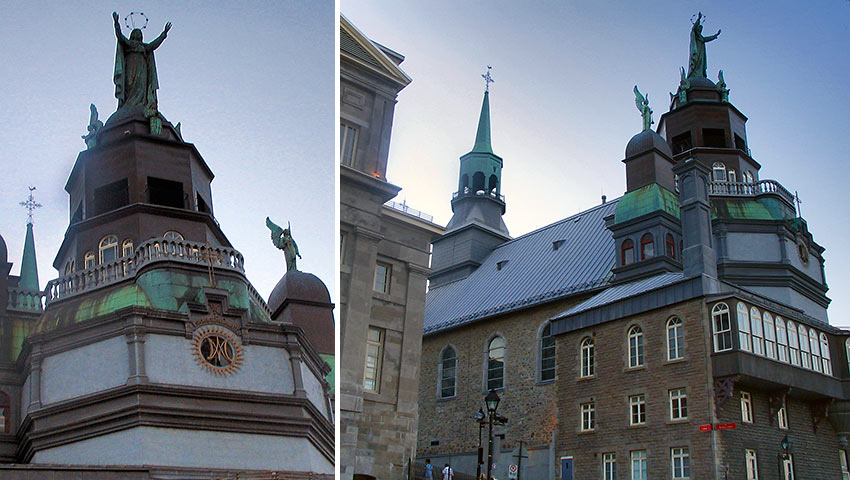
Notre-Dame-de-Bonsecours Chapel
Montréal is a city of cathedrals, and for my first trip to the city my plan was to walk from one church to the next, never knowing what experience awaited me around each corner. While wandering on the edge of Old Montréal, I stumbled upon Notre-Dame-de-Bonsecours Chapel, known as The Sailor’s Church due to its proximity to the Old Port. I was quite moved by the statue of a woman atop its dome, which seemed to reach out to the river. Upon closer inspection I realize that the statue was Our Lady of the Harbour, made famous by Leonard Cohen in his song, Suzanne. The church also features an observation tower with remarkable views of Old Montréal and the St. Lawrence, and a museum, which includes artifacts pre-dating the arrival of the New France colonists in 1642. Admission to the chapel is free.
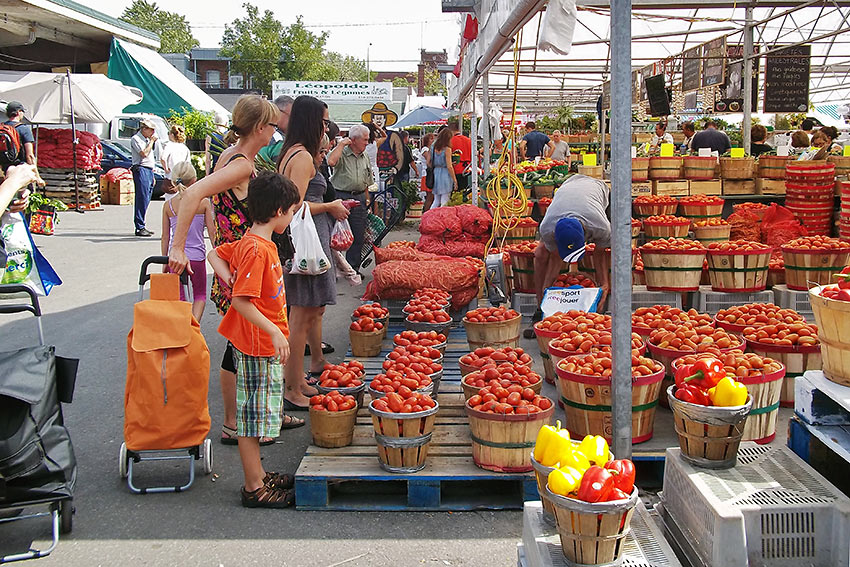
Little Italy
Coming from a Northern Italian ancestry, I’m always drawn to Italian communities. Montréal’s Little Italy (Piccola Italia) is the second largest (after Toronto) in Canada. The community is filled with Italian cafés, restaurants and bars, specialty food shops, cultural landmarks, and Jean-Talon Market, Montréal’s most vibrant open-air food area. Vendors sell flowers, and locals play bocce at nearby Parc Dante. Also located there is Madonna della Difesa Church, one of the most important landmarks in the area. An insider secret is the fresco situated above the High Altar, shows a virile Benito Mussolini astride a horse, commemorating his signing of the Latern Treaty. In 1929 he was still pretty much regarded as a good guy among Little Italy’s community.
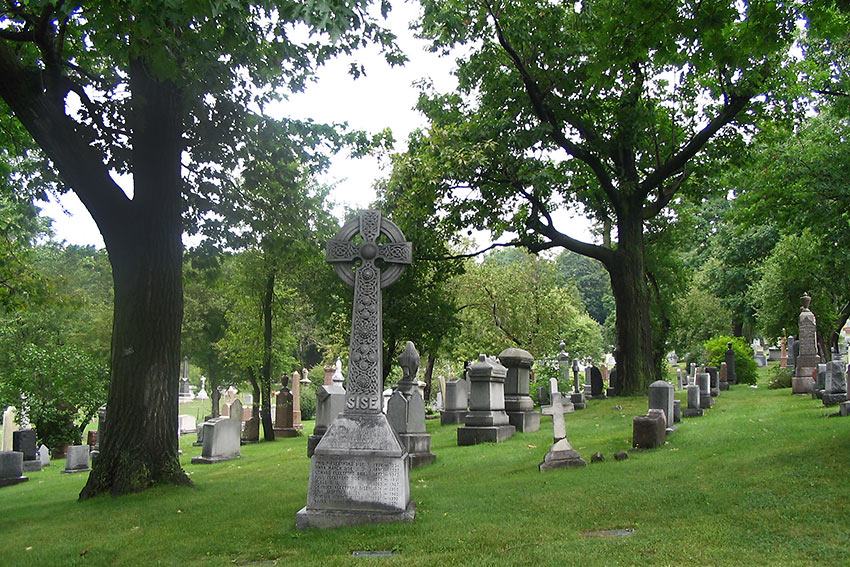
Mount Royal Cemetery
I’ve never been one attracted to the morbid, but these 165 acres, located on the north slope of Mount Royal, are worth exploring both for their beauty and sense of history. Founded in 1852, and now a National Historic Site, the setting is almost romantic with its large green spaces, monumental headstones and crosses from the Victorian era. Buried at the cemetery include John Molson, Molson Beer industrialist and benefactor of numerous Montréal institutions, John Abbott, 3rd Canadian Prime Minister, other Confederation Fathers, iconic hockey players — remember, hockey was invented in Canada — and even victims of the Titanic. Leonard Cohen lies at rest atop Mount Royal, buried beside his parents, grandparents and great-grandparents in the cemetery of the congregation with which he maintained a lifelong connection. Historical guided tours are available to learn about the life of some of the other famous figures that are buried in the cemetery.
Underground Montreal
Yes, the winter months are long and cold, but for Montréalers there is an 18.5 miles underground city of malls, food courts, office complexes, hotels, apartments, and Metro stops. It’s not even necessary to wear a coat. It is unique for a city that so proudly preserves it past to have something so modern, and I’ve always enjoyed strolling its maze of tunnels, corridors, escalators, and concourses. Later, I learned that Houston, Texas has an underground mall as well, modeled after Montreal’s. But this was designed for much needed protection from the blistering Texas summer sun and its humidity.
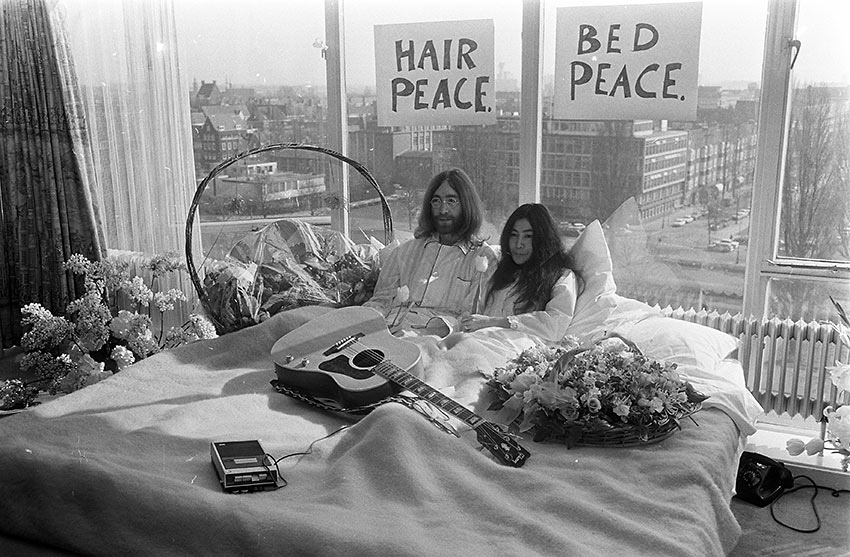
John Lennon and Yoko Ono Suite 1742
Located in the famous Fairmont Queen Elizabeth Hotel, this one-bedroom suite was the site of the legendary 1969 Bed-in for Peace in Montréal, where John and Yoko recorded the song Give Peace a Chance. Guests singing along included Timothy Leary, Petula Clark, Tommy Smothers and whoever happened to be present in the room. The living room and bedroom feature memorabilia composed of press articles, framed gold records and pictures of the famous couple. The suite is available for lodging and can also be rented for parties. Sometimes I will only make a pilgrimage to the room’s exterior, just to see the plaque on the door.
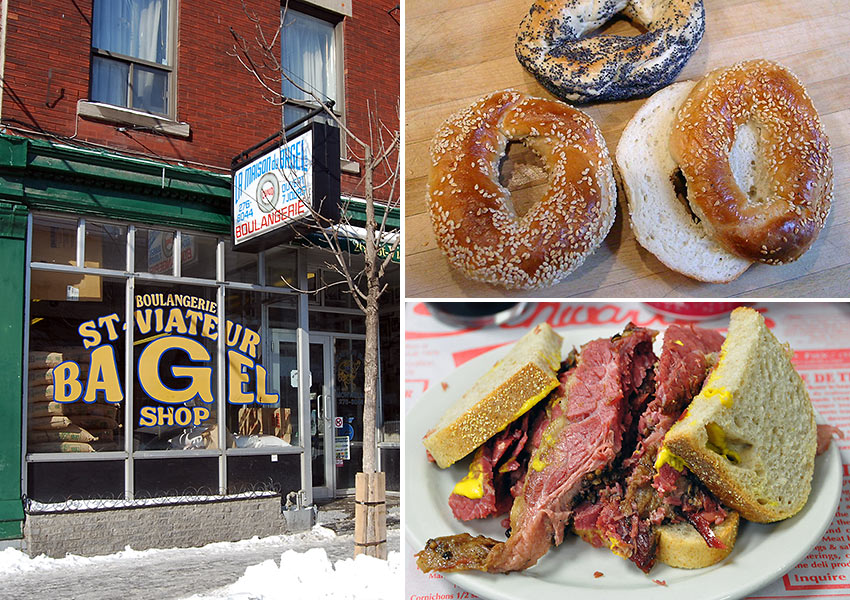
Montréal Bagels
In Montréal you will you hear it pronounced “bah- gal” and yes, they are different. In contrast to the New York-style bagel, which also contains sourdough, the Montréal bagel is smaller, thinner, sweeter and denser, with a larger hole, and always baked in a wood-fired oven. It contains malt, egg, and no salt, and is boiled in honey-sweetened water before being baked. You will also hear from locals that they are the best and most authentic bagels in world. I once took a homeless man, a Montréal expat living in Vancouver, for coffee and asked if he would like a bagel, too. He replied that they were not real bagels, and declined. His favorites and now mine: Montréal’s historic St.-Viateur Bagel and Fairmount Bagel.
Montréal Smoked Meat
We all know pastrami and corned beef, but what is smoked meat? Well, it’s basically beef brisket that has been dry-cured, but then soaked (unlike pastrami) to desalinate it before seasoning and smoking. The seasoning is apparently a secret, for no one will divulge anything else other than it makes the most delicious sandwich on the planet. Schwartz’s (circa 1928) is the oldest deli in Canada and is considered institution, though others will make a case for the newcomer, Reuben’s Deli and Steakhouse, at only a mere 40 years of existence.
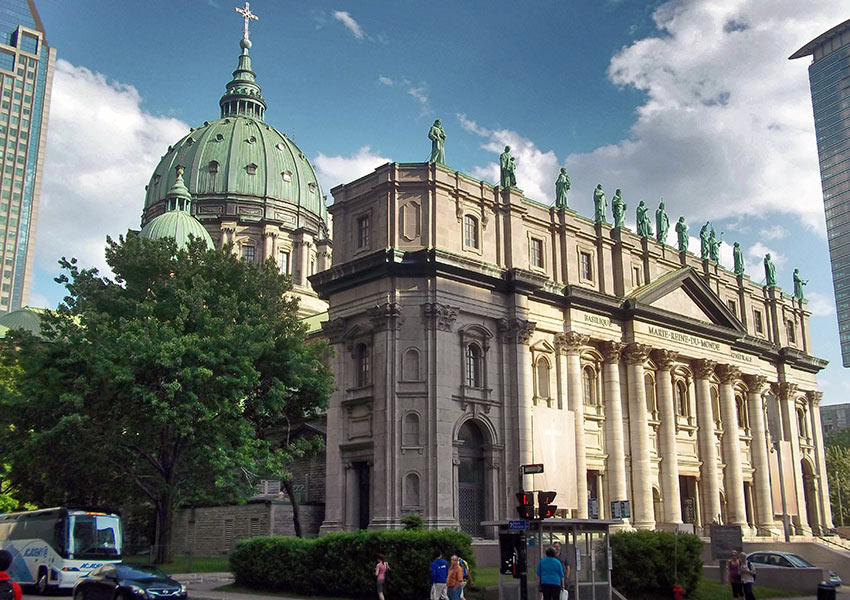
Other attractions
Touring Notre-Dame Basilica of Montréal and Marie-Reine-du-Monde Cathedral, strolling trendy St-Catherine and St Laurent Boulevards, exploring the Downtown Museum Quarter and wandering the Quartier Latin, the main Francophone district. You can also take a spin on La Grande Roue de Montréal, the highest observation wheel in Canada at 197 feet.
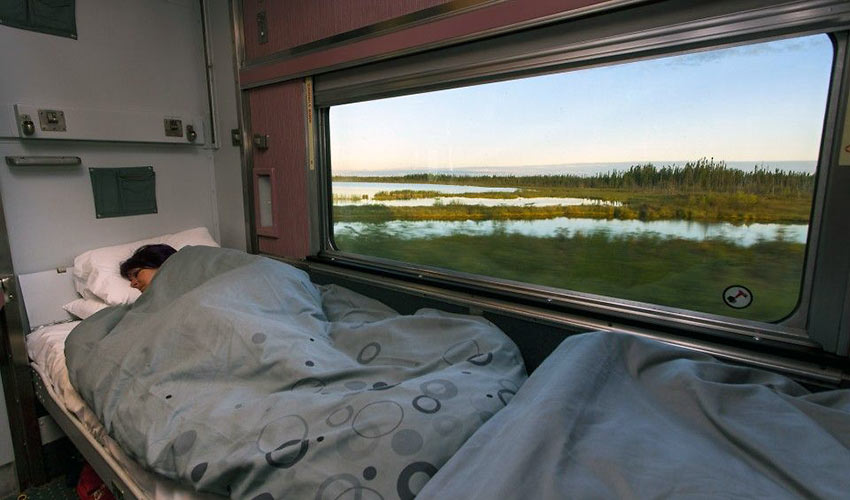
How to get there
Virtually all major airlines offer flights to Montréal, but if you have the time, why not go the distance and travel in luxury aboard VIA Rail Canada. I’ve trekked the rails from Vancouver to Halifax, and from the comfort of an armchair, crossed six provinces, experiencing everything from towering mountain peaks, sweeping forests and unique wildlife to wide-open prairies, two oceans and world-class cities. It’s even better with a Caesar, a Canadian version of the Bloody Mary, in your hand. With the sound of tracks, it’s easy to slip off to a luxuriant night of sleep.
Where to stay
There is no hotel more conveniently situated than the Fairmont The Queen Elizabeth. Located above the train station (Via Rail & AMTRAK) and connected to the underground city, this legendary hotel is within walking distance of downtown’s numerous attractions as well as Old Montréal. Offering 1,039 rooms, in which 100 are suites, this landmark property has played host to Charles de Gaulle, Nelson Mandela, the Dalai Lama, Mikhail Gorbachev and, if it was a not a surprise, Queen Elizabeth ll.
For further information about travel to Montréal, visit Tourisme-Montreal.org or (877) BONJOUR.

